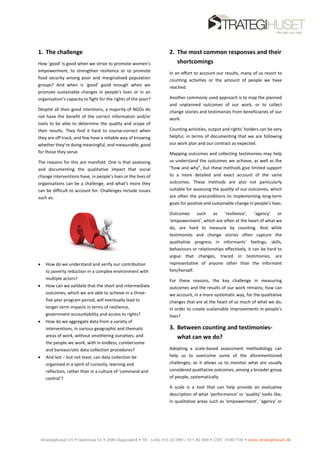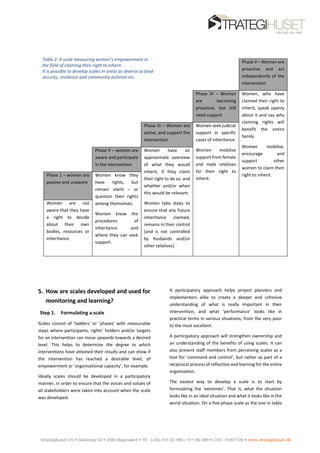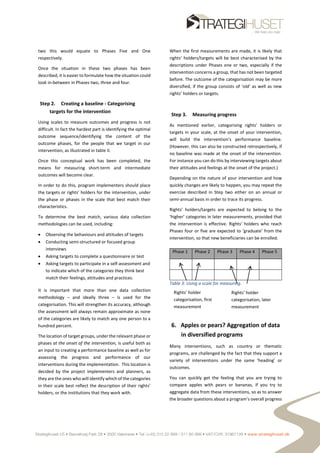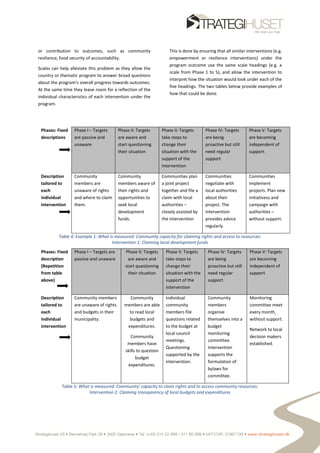This document introduces scales to measure qualitative results of development work. Scales allow assessment of outcomes like empowerment, resilience, and institutional capacity. They describe performance levels along a ladder or phases. Developing scales participatorily helps ensure stakeholder values are considered. Scales can systematically monitor qualitative changes among groups and aggregate diverse data better than counting activities or collecting testimonies alone. They provide a fuller picture of situations than single indicators.






